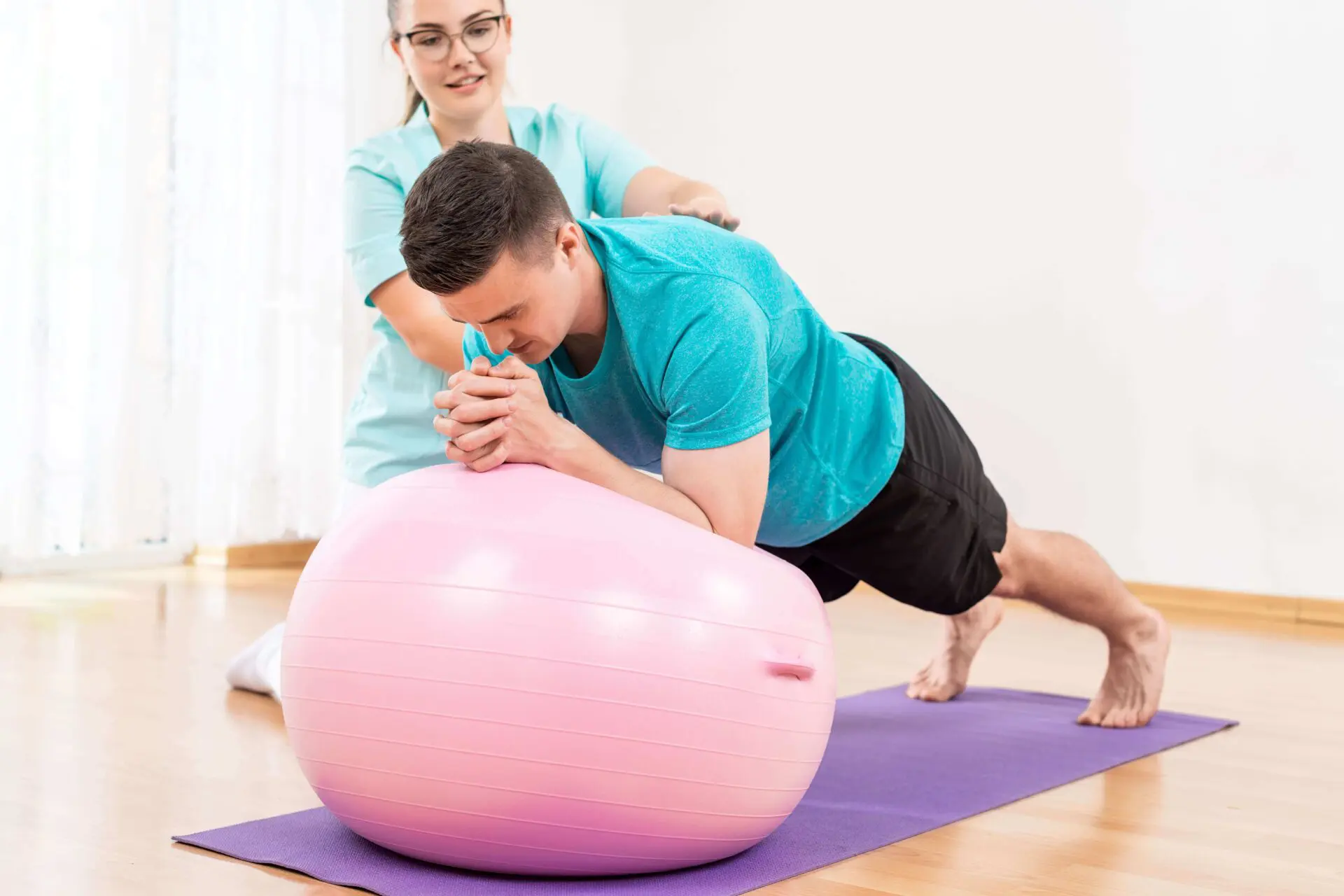Core Stabilization In Cherry Hill

The “core” is the backbone of the body that keeps it balanced and stable. It refers to a group of muscles that extend beyond just the abs to the entire torso. Having a strong core helps stabilize the spine, allowing for proper balance and flexibility in movements. Physical therapists work with patients to improve core stability, which helps to prevent injury, maintain good posture, and reduce stress on joints.
What makes up the “Core”?
The core includes muscles that run along the torso, including the abs in the front and sides, the erector muscles in the back, and other muscles that cross multiple joints. When the core muscles contract, they provide stability to the spine, pelvis, and shoulders, creating a solid base for standing, moving, and shifting weight.
Important core muscles include:
Transverse Abdominis (TrA): The TrA is the deepest of the abdominal muscles and surrounds the spine and the front of the abdomen. It acts like a built-in corset for the internal organs. It lies beneath the rectus abdominus (the “six-pack” muscle). The TrA is critical for spinal stability and maintaining pressure in the abdominal area.
Rectus Abdominis: The rectus abdominis, also known as the “abdominal muscle,” consists of two parallel muscles running vertically on either side of the abdomen, from the rib cage to the pubic bone. The rectus abdominis helps control and stabilize the tilt of the pelvis and is crucial in breathing, giving birth, and eliminating waste.
Obliques: Both the internal and external obliques contribute to spinal stability. The external oblique muscles run along the sides of the trunk from the lower ribs to the pelvis and cover the sides of the abdomen. They help rotate the trunk and support the rotation of the spine. The internal obliques play a role in bending the spine sideways and rotating the trunk.
Erector Spinae: The erector spinae muscles are a group of muscles that run along the entire length of the spine to the pelvis. They provide support to the spine, keeping it upright and stable, and allowing for spinal extension and rotation.
What is Core Stability?
Core stability refers to the activation of the torso muscles (hips, abs, and pelvis) to create a stable base for movements. Strong core muscles help maintain good posture and respond efficiently to changes in movement.
Having a stable core means:
Being able to resist and adapt to changes in position due to external forces or changes in the body.
With a strong core, small corrections can be made to stay upright when faced with external forces. With a weak core, larger adjustments must be made, making it more difficult to maintain balance. A strong core allows for efficient and effective corrections to stay upright and balanced.
Relieving stress on the spine and internal stability tissues (ligaments, intervertebral discs, and cartilage between joints) that are loaded to maintain an upright position without strong core muscles. The muscles can absorb and adapt to various forces, reducing the risk of injury to internal tissues.
Core stability is crucial for supporting the body and avoiding injury during movement. Physical therapists can assess core stability and develop a program to improve the strength, endurance, and control of core muscles. The therapist will progress the patient through different levels of core exercises based on their baseline core function.
Physical therapists design core strengthening exercises specific to your needs based on the functional stability required for different activities. For instance, holding a plank position for thirty seconds trains the core to maintain stability during high-intensity, brief activities, while performing upper body exercises while standing on a balance trainer strengthens the core muscles for longer, low-impact activities. As the stability and strength of the core are essential for optimal body function, physical therapists often incorporate core stabilizing exercises into their treatment plan for a range of conditions.
Our Core Stabilization in Cherry Hill
This program is aimed at introducing the basics of core stabilization and enhancing the central muscle groups of the body. The objectives of the program include reducing the chances of injury, alleviating pain, and improving overall function through increased strength, posture, and mobility. Core stability is enhanced by performing exercises that boost muscle power and coordination, which result in more efficient movement. The physical therapist will provide guidance to ensure patients perform the exercises safely and effectively. They will progress patients through challenging functional movements while maintaining a neutral, pain-free spine position. Advanced goals will be achieved through improved balance and coordination, with a program tailored to the individual goals of each patient. The therapist’s goal is to equip patients with proper technique and confidence to enable them to progress to an independent home exercise regimen. The program includes strengthening exercises in various body positions, flexibility training, and aerobic conditioning. Although these activities serve as general guidelines, the therapist will adjust the program as needed for each patient. Additionally, the physical therapist will educate patients on proper body mechanics, transfer techniques, ergonomics, and joint protection techniques. This program is beneficial before and after surgery.


